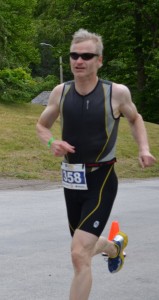 Indulge me as we start the New Year.
Indulge me as we start the New Year.
I often focus my blog articles on client experiences and recent performance research and findings. However, during workshops and presentations I am often asked to share some of my human performance stories and insights coming from racing as a triathlete for over 20 years.
So to start off, triathlon involves swimming, biking and running at various distances, depending on the event and the abilities of the participants. The sport of triathlon has grown enormously over the last 10 years and these days you can participate in races around the globe.
When I am asked about the transferable performance lessons and skills that can be used in our organizations, it sometimes can be overwhelming as there are many performance attitudes, values and skills that are applicable to our modern day work worlds. Here are just a few:
1) Great organizational performance is not just about one person or a team.
Often when we see a triathlete racing, we only see the individual performance at that given time, which is similar to sports like golf or tennis. And it is like that within many organizations – we see individual’s or team’s great performance, but what we don’t see is all the people in the background that made that performance possible.
In individual sports, the “background” performers are the coaches, therapists, managers, volunteers and sponsors, who have collectively enabled the individual to achieve their personal best. In many organizations, we often don’t see all the background performers and their hard work that has gone into someone else’s performance. They are often referred to as the behind-the-scenes people. However, performance-focused cultures know the value of the actions of every person that has enabled that great performance, and they always acknowledge it so that everyone can share in the victory.
2) Great performance requires planning.
This time of year triathletes are usually putting the finishing touches on their training and racing plans. They know the type and amount of training they need to do in order to achieve their goals. They pay particular attention to their areas of strength and focus on key areas for performance improvement.
Similarly, human performance organizations develop business plans, with strategies and objectives that need to be accomplished for the year. They know their key strengths within the marketplace and the areas they need to improve in order to reach their goals for the year.
3) Plans need creative execution.
Experienced triathletes know that even a great plan needs to be executed if they want to achieve their goals and objectives. Changes in stress levels, weather conditions, injuries and diet are all variables that need to be accounted for as the performance plan is executed and the athlete moves closer to their peak performance.
Human performance organizations operate in a similar manner. They give their employees the latitude to execute in an adaptive way in order to account for changes in the marketplace, with employees, competing demands and deadlines. This gives the employees the ability to make critical decisions in order to achieve organizational goals and objectives, which is essential for modern day businesses and organizations to remain competitive and innovative.
All the best in achieving your highest performance.
Paul